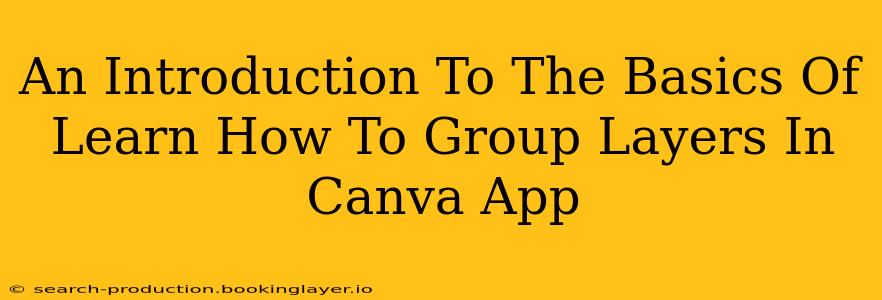Canva is a powerful design tool, but mastering its features can feel overwhelming, especially for beginners. One crucial skill that significantly streamlines your workflow is understanding how to group layers. This simple yet powerful technique allows you to manage and manipulate multiple design elements simultaneously, saving you valuable time and effort. This beginner-friendly guide will walk you through the basics of grouping layers in Canva, empowering you to create more efficient and polished designs.
Understanding Canva Layers
Before diving into grouping, let's quickly grasp the concept of layers in Canva. Imagine your design as a stack of transparent sheets. Each element—text, image, shape—resides on a separate sheet, or layer. Layers are stacked on top of each other, with the topmost layer obscuring any elements beneath it. This layering system allows for complex designs with intricate arrangements.
Why Group Layers in Canva?
Grouping layers offers several key advantages:
- Simplified Editing: Instead of selecting each element individually, you can select the entire group and move, resize, or even duplicate it as a single unit. This is incredibly useful for complex designs with numerous elements.
- Organized Workflow: Grouping related elements keeps your design workspace organized and prevents accidental edits to individual components. Think of it as creating mini-projects within your larger project.
- Efficient Design: Grouping significantly speeds up your design process, allowing you to focus on the creative aspects rather than tedious individual element manipulation.
- Improved Accuracy: When moving or resizing, grouped elements maintain their relative positions, avoiding misalignment issues.
How to Group Layers in Canva: A Step-by-Step Guide
Grouping layers in Canva is surprisingly straightforward. Follow these simple steps:
-
Select Your Elements: Click and drag your mouse to select all the layers you want to group. Alternatively, you can hold down the
Shiftkey while clicking individual layers. Make sure all the elements you intend to group are highlighted. -
Group the Selected Elements: Once selected, look for the "Group" button in the top toolbar. It's usually represented by a square icon with four smaller squares inside. Click this button to group your selected layers.
-
Working with the Group: Now that your elements are grouped, you can treat them as a single unit. You can move, resize, duplicate, or even apply effects to the entire group.
-
Ungrouping Layers: If you need to edit individual elements within the group, simply select the group and click the "Ungroup" button (it's usually located next to the "Group" button). This returns you to the individual layers.
Mastering Grouping for Advanced Canva Designs
Grouping layers isn't just for beginners; it's a fundamental technique used even by experienced Canva designers. Here are some advanced applications:
- Creating Reusable Components: Group frequently used design elements (like logos or headers) to easily reuse them across different projects.
- Complex Layouts: Manage intricate layouts by grouping related sections (like headings, body text, and images) into logical units.
- Animated Designs: Grouping allows for coordinated animation of multiple elements.
Tips for Efficient Layer Management in Canva
- Regularly Group: Get into the habit of grouping layers throughout your design process to maintain organization.
- Meaningful Names: When dealing with many groups, consider renaming them for easier identification.
- Unlock the Power of Layers: Experiment and discover the many ways layers can enhance your designs.
By mastering the art of grouping layers, you'll significantly enhance your Canva workflow, leading to more efficient, organized, and ultimately, more stunning designs. Remember, practice makes perfect! So, start experimenting with these techniques and unlock your design potential within Canva.

